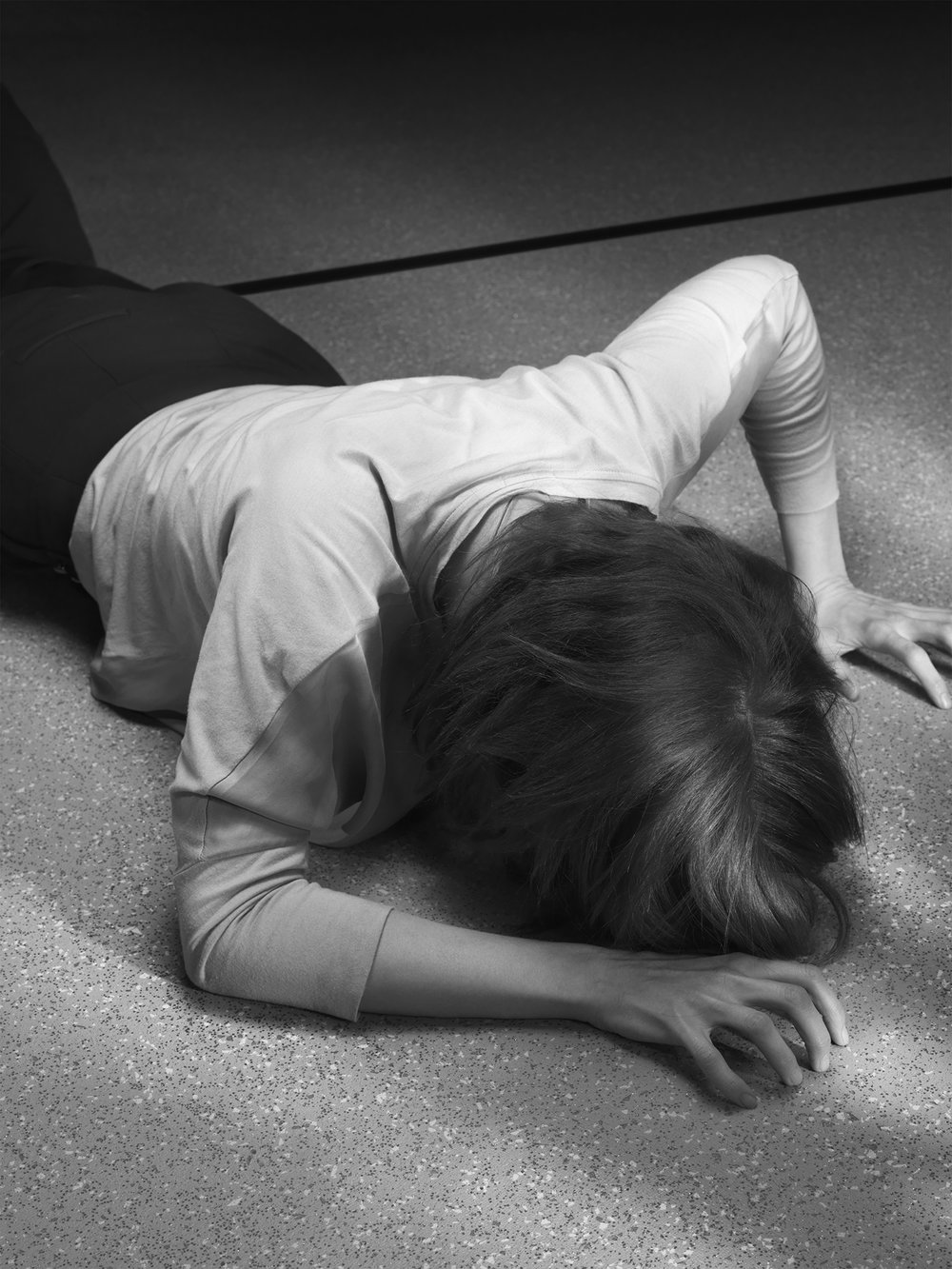UNDER THE INFLUENCE Exorcisms, worship, commodification & illusion
As I write this, a portion of Dominic Hawgood’s project Under the Influence is on display at TJ Boulting gallery in London’s West End. The gallery space has been re-floored and re-skinned as a spotless white set for a show that is as much a light installation as a photography exhibition. In this series the photographer uses the whole toolbox of advertising photography, including lighting, digital image manipulation and CGI. He tests the limits of image-making to depict the limits of human experience. These images are drawn from scenes the photographer witnessed in Pentecostal churches in London, as mediated through the ways exorcisms and healings are documented and disseminated by the churches themselves.
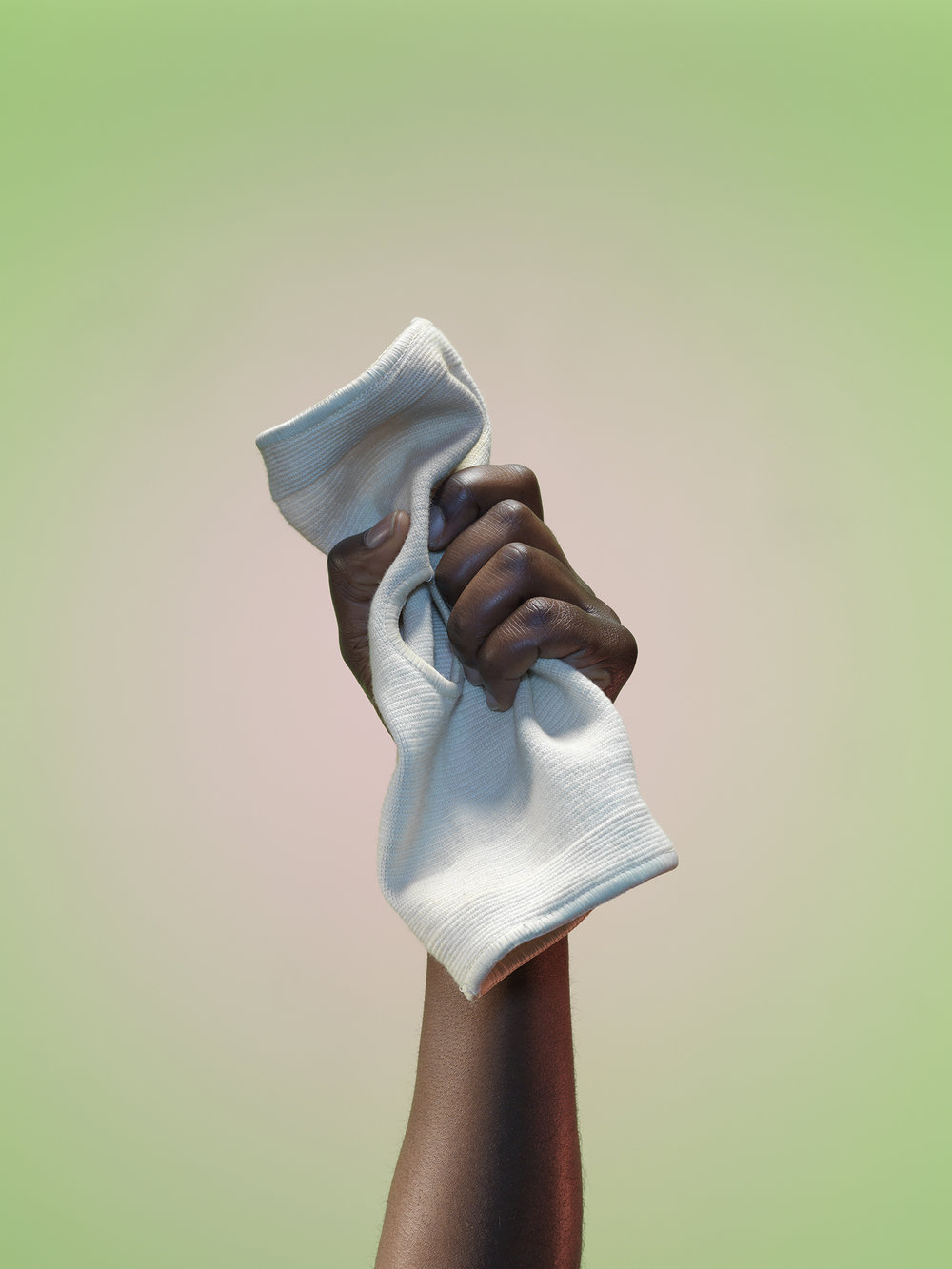

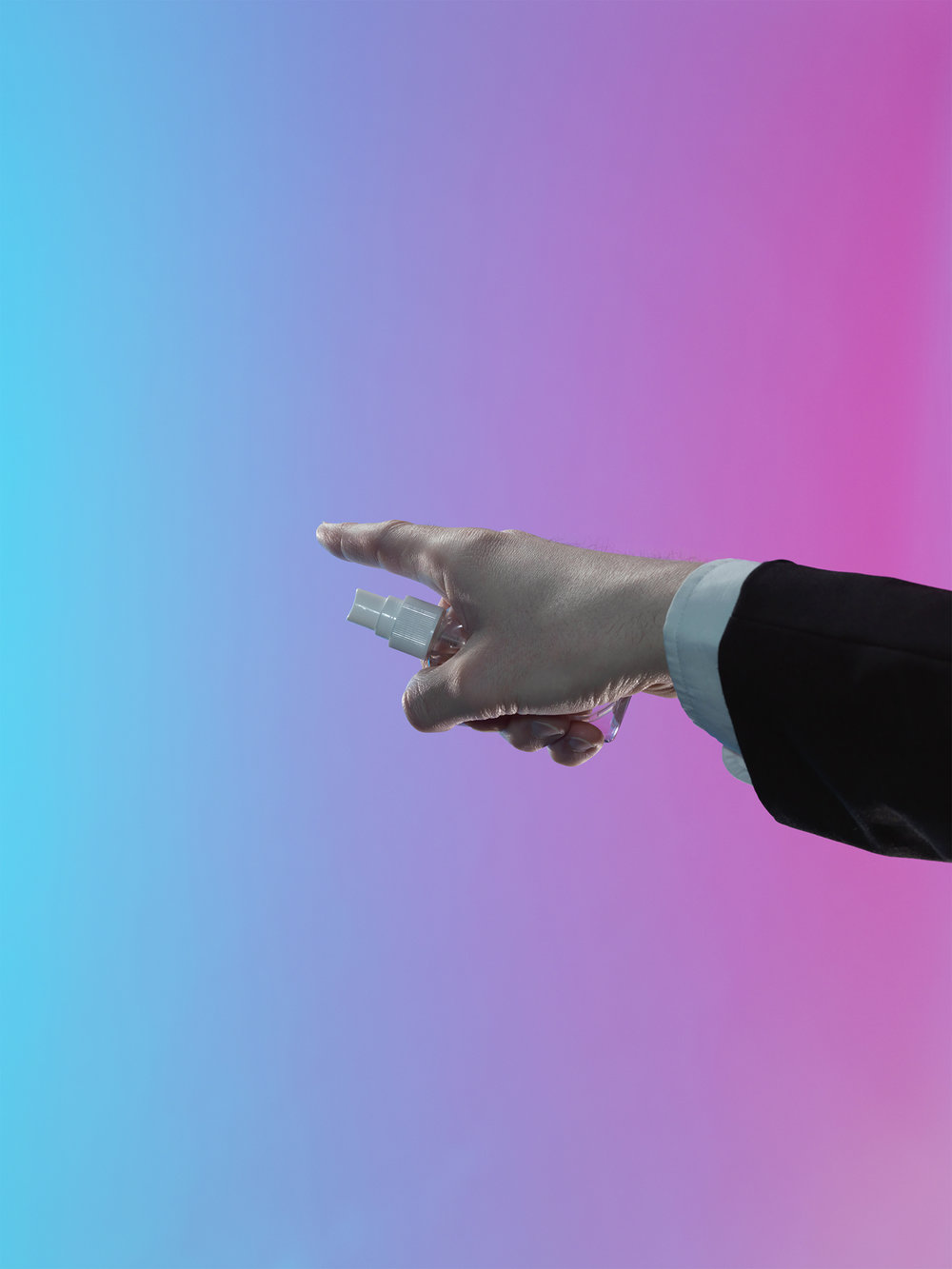
If you just walked in off the street, the experience would be intense but possibly bewildering. The images oscillate between the visual rhetoric of photographic realism and the contrived seduction of advertising photography. They depict a world of sensation in which frozen hands grip, reach and claw, a world of high detail in which chipped nail polish, the down on a girl’s cheek or the texture of institutional carpet provide forensic clues to a mystery that lies somewhere out of frame. With titles for individual images such as, I Command You Get Out, and Rise Up You Are Free, this is the vocabulary and material culture of deliverance: crutches thrown aside, microphones thrust forward, and redemption conferred by the squirt of a spray bottle.
The experience of the work extends beyond this content to the atmosphere produced in room. Lit from below by the slightly headachy blue glow of hidden LED lights, the five black and white vinyl images of figures appear both to recede into the wall and to float a few millimetres away from it. The matte vinyls are punctuated by two extraordinarily slick objects – sculptural light boxes propped on the floor like a pair of giant iPads. These cast coloured halos into the room and also glow eerily from behind. The overall effect is of slight disorientation. These photographs do not behave as they should. It is as if disembodied screen images have taken on unstable new forms to meet us in the space of the gallery.
Only parts of Under the Influence can be seen in this installation. As with many contemporary projects, the work exists across several platforms, which may be considered in relation to one another for a fuller picture without necessarily looking to the photographer for an explanation. On the artist’s website vivid text by writer Pascale Cumming-Benson describes what actually happens in the church services – extreme bodily experience is looped through microphones, screens and speakers. At one point, “A woman runs to the front and casts herself down on the floor. She vomits and spits into the tissues placed in front of her. Another runs forward. Stretched out on the floor, they are surrounded by the ministers and cameramen.” Interspersed with the website’s text and images are hypnotic black and white video clips, YouTube extracts posted by the churches reconfigured by the artist into elegant vertical rectangles, unfocused and slowed-down. Too vague to act as documentary evidence (it would not be possible to identify a particular person or activity), they offer a strangely distanced view of physical and spiritual fervour.
Under the Influence also exists as a high-resolution three-dimensional architectural render. In this format Hawgood develops an interactive walk-through of how the specially lit images and videos would be look in an impossibly ideal environment, without the constraints of money, labour or architecture. The current installation was developed to approximate this render as closely as possible. The artist’s own photographic documentation of the live exhibition provides another level of feedback on this loop of virtual and actual.
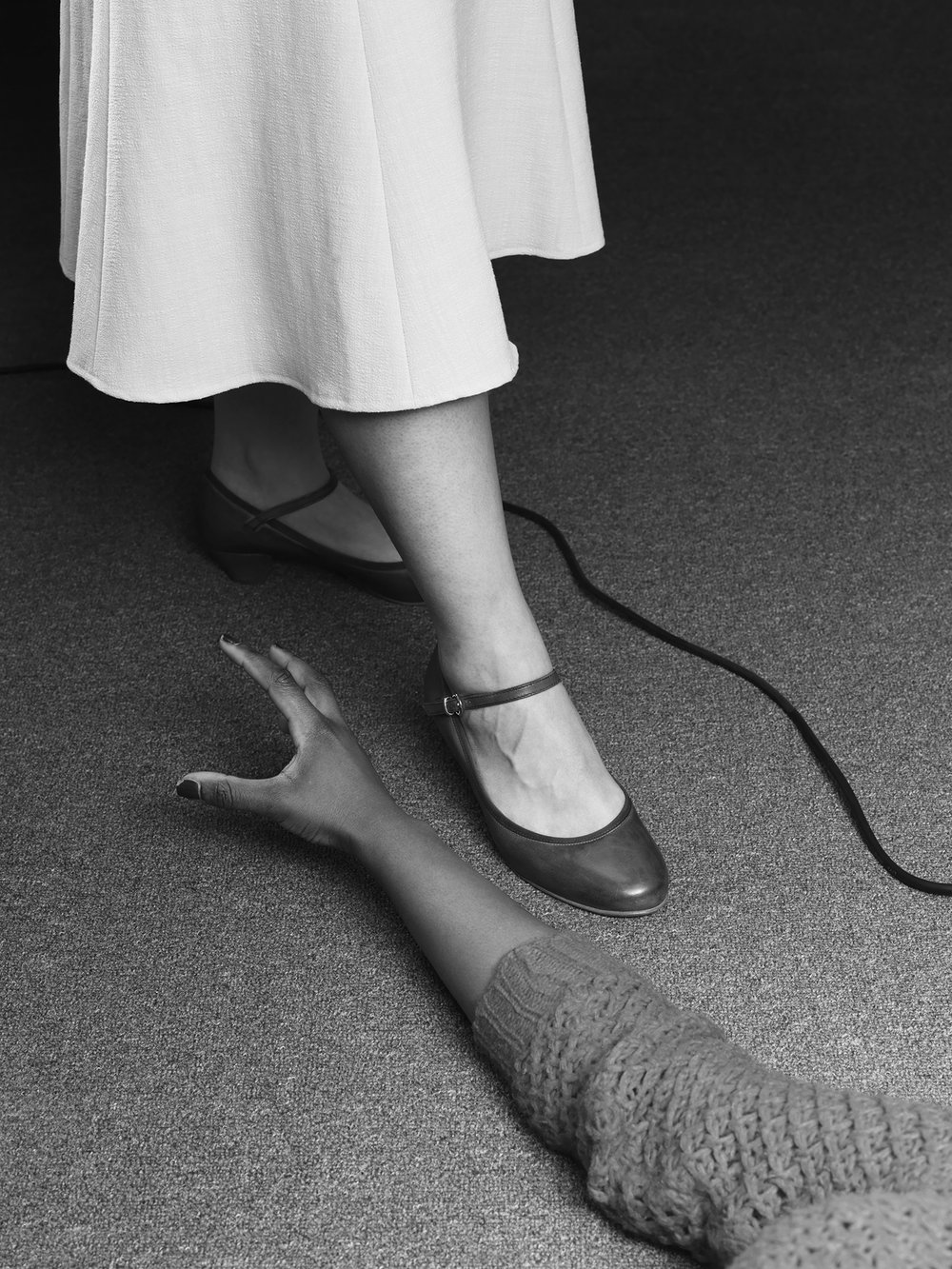

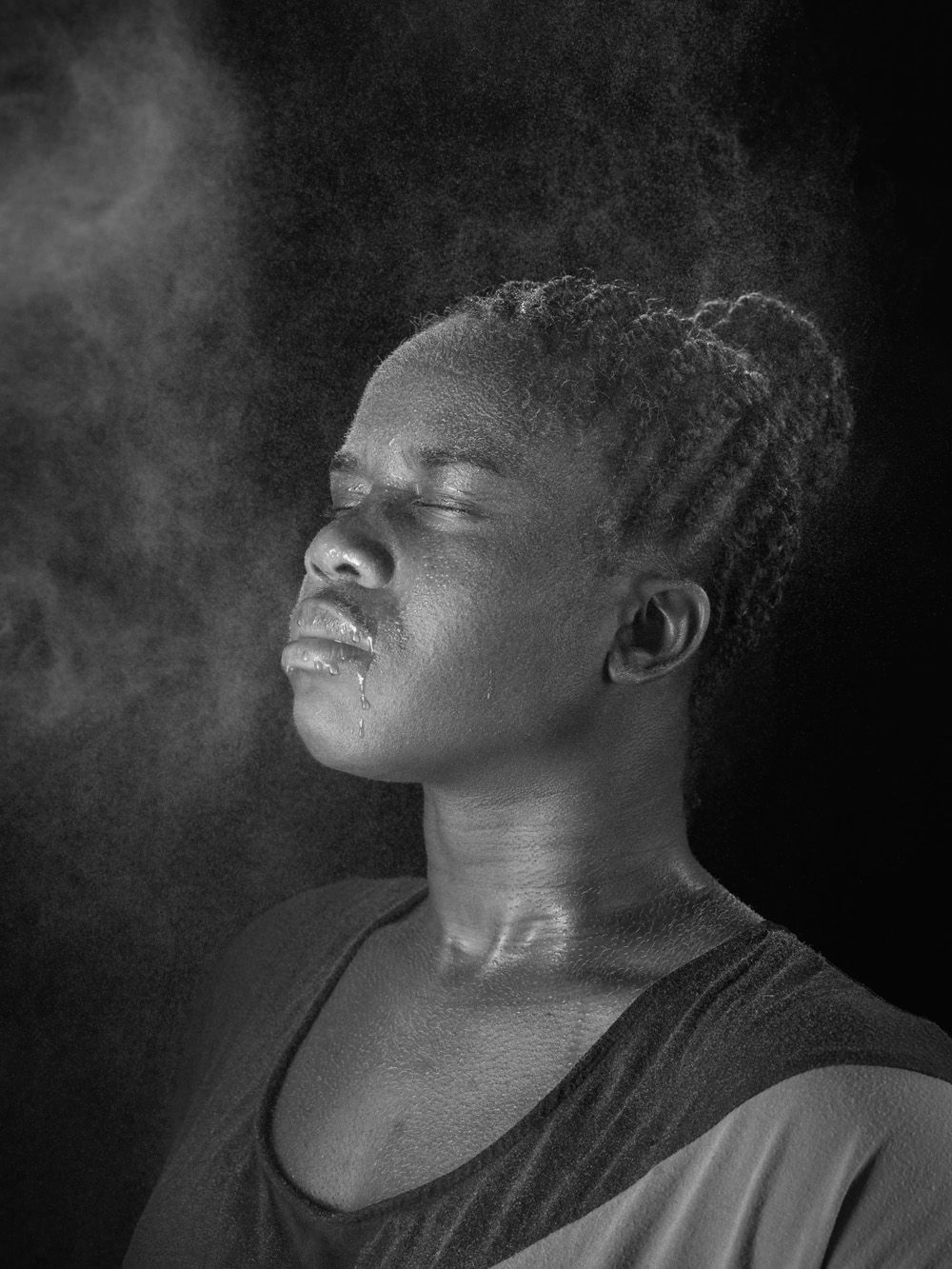
In Under the Influence, as in previous projects, Hawgood has photographed subjects with first-hand experience of the phenomena depicted, but he does not tell us how or why. Reconstructing events from the world, Hawgood might recall Jeff Wall or Philip-Lorca diCorcia, but I think more appropriate reference points would be Ed Atkins or James Bridle (the latter currently showing nearby at The Photographer’s Gallery). Like Atkins in works likeWarm, Warm, Warm Spring Mouths (2013), Hawgood plays on our visceral reaction to the intersection point of flesh and pixels. Both artists use digitally heightened, impossible images to explore what remains of our stone age physicality: the brute sensations and inchoate longings that make us feel real. Like Bridle, whose recent work Seamless Transitions provides a CGI fly-through of forbidden spaces of the UK immigration and asylum system, Hawgood’s work also considers the politics of imaging, how we participate in the surveillance of our own existence, and how that documentation helps to shape our reality. Hawgood also cites as influences Tom McCarthy’s novel Remainder, and Joshua Oppenheimer’s 2012 film The Act of Killing, both works that include painstaking recreations of traumatic events. In an era of simulacra a consciously fictive reenactment may get closer to the truth of an event than more traditional forms of documentation.
A decade ago, narrative photography was all about the tableau, the grand staged scenes that Julian Stallabrass dubbed ‘museum pictures’ for their grandiosity and historical aspiration. For writers like Jean-François Chevrier and Michael Fried, the tableau needs to be self-contained, a world unto itself, into which we can project our thoughts without being caught up in any external trappings of theatricality. Hawgood’s use of lighting and installation, external text, supplementary video and virtual documentation openly flaunts this model of picture-making. In his hands photography provides less a totalising vision than a contingent, complicit mode of exploration. This is less a ‘model of experience’ (Chevrier’s claim for pictorial photography) than a quest for experience, using various forms of unreliable imaging to re-activate the jaded viewer’s imagination.
Text commissioned by 1000 Words and written by Lucy Soutter, an artist, critic and art historian. She is senior tutor in the Department of Critical and Historical Studies at the Royal College of Art, London, and is the author of Why Art Photography? (London: Routledge Press, 2013).
